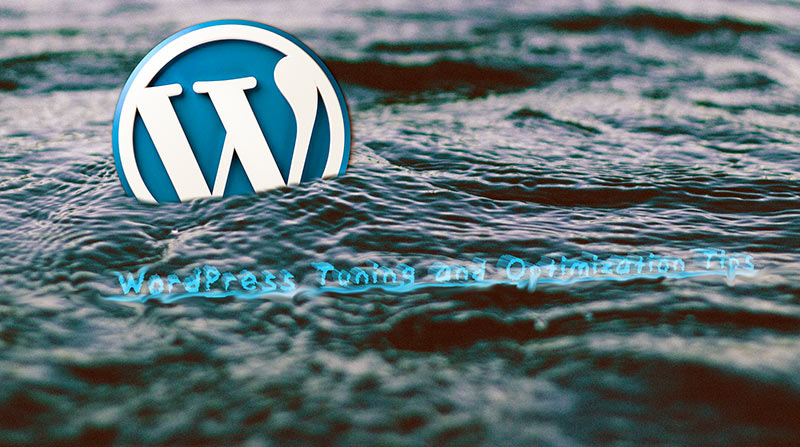
20 May WordPress Tuning and Optimization Tips & Tricks
One of the key factors in ensuring that your audience has a good experience with your site is its overall performance. It’s true; your website’s overall performance will make or break your site. Nobody likes to navigate on a site that is slow to load or is just plain buggy. Having a buggy or slow to load site is the number one way to increase your website’s bounce rate or affect your SEO SERP rankings. So if you want your website to have some speed, you must ensure you know and implement WordPress tricks and your website is in tip-top shape.
It’s worth your time and effort to spend some time tuning and optimizing your WordPress website if you want your audience to stick around. If you need some advice on how you can speed up your WordPress website, check out these simple WordPress tuning and optimization tips.
1. First, measure your current website’s performance. By doing this, you can establish the data (benchmarks) you need to make an accurate comparison later on down the line. If you want to see how your changes affect the performance of your site, you first need to measure the current performance of your WordPress website.
2. Get yourself some good web hosting, preferably one that monitors their WordPress servers, keeps the servers optimized, and quickly fixes any performance issues. Good server management goes a long way. By using a trusted company and not the cheapest option, you can save yourself some cash and from developing a headache. If you are in the market for WordPress web hosting, contact us today to find out more about what we offer.
3. It is vital that you keep your WordPress website current and up to date. If you don’t keep WordPress itself and all of your plugin’s current and up to date, you run a much higher risk of running into problems. Or worse, your site could get hacked. Old, outdated plugins are more vulnerable, so when you see that there is a new update available for your plugins or for WordPress itself, make sure you get on that ASAP.
4. Make sure that the framework/theme you are using is light and fast. You don’t need to utilize a theme that is packed full of features that you don’t need or use. You want to use a theme that is well-coded and not full of bloat if you want your site to have some speed. Otherwise, using a heavy and bloated site is a good way to impact your website’s performance negatively.
5. There are a lot of plugin’s available to enhance your WordPress site, but that doesn’t mean all of them are well-coded and suitable to use. When searching for a new plugin to install, ensure that the particular plugin you are looking at is optimized and compatible with your current version of WordPress. Also, don’t forget to check out the plugin’s rating and reviews, as this can help save you from an unnecessary headache.
6. While we are on the subject of plugin’s, make sure you go through your plugins and delete any that you are not using. When you are in the process of building a site, it’s not uncommon to install different plugins so you can find the one that works best. There is a lot available for you to experiment with! However, these unused plugins can build up quickly, take up space, and slow down your site.
7. You want to make sure that the images on your website are not too big, as this is one of the heavier elements of a website. If you have an enormous image, large in physical and file size, it WILL slow down your site. It is important that your web images are optimized. You can resize photos BEFORE you upload in a photo editing program such as Adobe Photoshop, or install a WordPress plugin (such as Smush.it) that will do the work for you every time you upload an image to your media library.
8. Installing a good caching plugin, such as WP Super Cache or W3 Total Cache, is an effective way to improve your website’s speed. When you utilize a caching plugin, users can see a cached copy of your web page. Instead of the “original” page that is built on the fly. Caching plugins reduce the number of PHP and HTTP requests, as well as greatly reduces MySQL database access. Without a cached page, WordPress will “build” your page every time someone visits your website. This is a lot of work and involves many steps, and WILL slow down your load time.
9. Remember, sometimes less is more. Try to aim to keep each page of your website under 200 kb. To accomplish this, this means that the images/videos that you use on your page need to be optimized for the web. Large video and picture files will negatively affect your website’s loading time, so compress these files appropriately. You also want to keep the design light and simple by not using too many unnecessary videos and pictures in your design. Not only can this overwhelm your audience, but it will also add unnecessary “dead weight” to your web page.
10. Follow this golden rule if you are developing your own theme, or editing a preexisting one: use CSS on top and JavaScript on the bottom (footer). CSS should be inputted in the <head> section. While most JavaScript should be placed at the bottom of your code (when possible), before the ending </body> tag. In addition, if you know what you are doing, replace PHP with HTML whenever possible. PHP is heavier and takes more time for web servers to process, while HTML is much lighter and faster.




